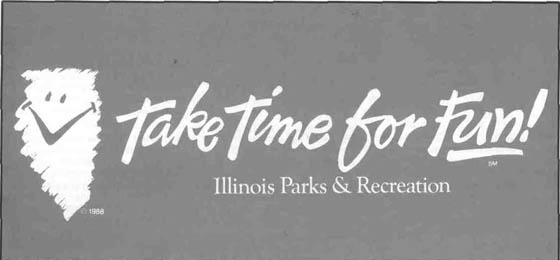 |
Home | Search | Browse | About IPO | Staff | Links |
 |
Home | Search | Browse | About IPO | Staff | Links |
|
Invite The Neighbors In . . .
But Have Professionals Plan The Menu"! By Joan Goldberg For a number of years the Park District of Highland Park has made a concerted effort to utilize volunteers in an advisory capacity. Each of their major facilities has a standing citizens committee for golf, tennis, nature center and ice activities. Park district staff are able to bounce new ideas off the people who regularly use the facilities and listen to their thoughts and concerns at regularly scheduled meetings throughout the year. Fee structures are also discussed. The membership of each committee is prominently posted at each facility so that citizens who might feel reluctant to make a suggestion or criticism directly to a staff member can usually find a "friend" to lend an ear. Recommendations of the committees are brought before the Board as a whole and usually accepted because of the working knowledge that has gone into the decision-making process.
Each committee has a Board member and the staff members most directly involved as sitting members. The citizen membership is set up in staggered terms and changes frequently enough so that an "in group" doesn't develop. In a similar fashion, advisory committees have been set up for youth baseball, recreation, beaches and boating, etc. However, some of the most important committees are those called into service to address specific needs, concerns or problems. In particular, neighborhood park planning can be enhanced and community relations strengthened when an advisory committee is set up as part of the planning process. As an example of this process, the Park District of Highland Park recently completed the renovation of the Weil Tot Lot with the help of a citizen group. I would like to share with you some of the basic concepts that made the cooperative effort so successful. The Process of Mutual Cooperation This small project was done exactly as our major projects are planned. The park district Board makes every effort to keep good records on all of their park sites. If neighbors have expressed concern about, or interest in, a specific park, their names are kept on file. In this particular case, descendants of the former park commissioner for whom the park was named are still living in the area. The Board felt that they would have an interest in the renovation process and they were invited to join the planning committee. Signage was posted in the park in the earliest stages of planning, asking neighbors to call the park district office if they were interested in particpating. Letters were sent to the residents living near the park and a meeting announcement was published in accordance with the Open Meetings Act. From the responses and the Board's own outreach a committee was named. Presenting Budgetary Options Through District Professionals The Board had established budget constraints within the parameters of its five year plan. Within those budgetary constraints the professional planning staff was charged with preparing a "menu" to be presented to the committee. Do you remember the old fable about how the camel came to be? a horse created by a committee! To keep from "creating camels," the Board has found it most valuable to have their district's professional staff show actual options to committee members. Then they have a pragmatic base to work from and realistic choices to make. Too frequently time has been wasted and committees encumbered having to "re-invent the wheel." By providing the committees with facts and figures about costs of specific play equipment and landscaping, they are able to make intelligent choices. If they feel strongly about installing an elaborate piece of play equipment, they can readily appreciate the trade-offs needed to include it in the project. Professional staff has also been assigned the responsibility to provide special insights and perspectives. For example, if most of the people in a neighborhood have very young children, they may focus on providing equipment for only the very young. Staff can point out the need to plan flexibly for the future. In the Weil Tot Lot renovation process, staff and committee worked well and enthusiastically together. New ideas were welcomed and incorporated into the planning process. In fact, aware of the budget for the project, some of the committee members chose to make a personal contribu-
Invite The Neighbors In . . . (Continued) tion to provide for particular play equipment.
Only three meetings were held. Efforts were made to limit the number of meetings to keep interest levels and attendance high. Each meeting had an established agenda to provide structure and a goal-oriented atmosphere. Actual conceptual sketches and photographs were shared with committee members from the first meeting. All were urged to visit other park sites to broaden their first-hand knowledge of park planning. Both staff and public gained new knowledge and experience from each other. The renovation of Weil Tot Lot is now complete. Neighbors frequently express their delight with the park's new design. Those who participated in the planning process felt they made a real contribution to the community. As they became more familiar with other parks and with staff members they became more of a park district "family." The project itself was professionally planned, yet, with the input from those who use it, the Board feels they found the perfect solution!

|
|
|